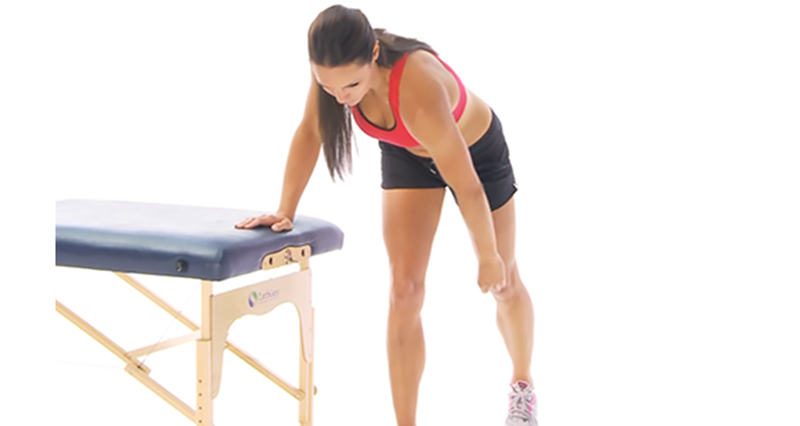Here we explain shoulder impingement exercises which are used as part of a full rehabilitation program. The aim is to reduce pain and restore full shoulder mobility and strength.
For information purposes only. Always check with a medical professional before beginning rehabilitation exercises.
Aim of shoulder impingement exercises
It is important that full mobility is maintained or regained in the shoulder joint for rehabilitation to be successful. In addition, normal biomechanical function (scapular rhythm) of the shoulder joint is essential.
This is easily lost if you have suffered a shoulder injury. In particular the shoulder blade (scapula) and upper arm bone (humerus) should move together. In the injured athlete this ‘rhythm’ is often lost.
Shoulder mobility & stretching exercises
The stretches below can be done on a daily basis, and ONLY if pain-free. Stretching must be done regularly and continued throughout the rehabilitation process.
Chest stretch

Teaching point:
- Place one forearm arm against a fixed point such as a doorframe or corner of a wall
- Gently lean forwards and turn away from it to stretch the chest muscles
- Again, hold the position for 20 to 30 seconds and repeat it 3 times
- The athlete should feel a gentle stretch in the front of the shoulder but no pain
Supraspinatus stretch
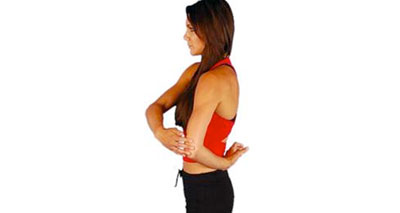
Teaching point:
- Place the hand on the lower back and use the other hand to pull the elbow forwards
- Keep your hand on your lower back
- You should feel a gentle stretch at the back of the shoulder
- Hold for 20 to 30 seconds and repeat 5 times assuming there is no pain.
- If it is painful then discontinue
Anterior (front) shoulder stretch
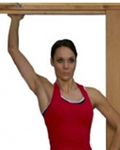
Teaching point:
- Grasp something above you such as a doorframe (or something similar if not tall enough)
- Move forwards leaving the arm behind to stretch the front of the shoulder and chest muscles
- Hold the position for 20 to 30 seconds and repeat it 3 times
- The athlete should feel a gentle stretch in the front of the shoulder but no pain
Posterior (back) shoulder stretch

Teaching point:
Stretching should be done as soon as pain will allow and maintained throughout the rehabilitation process and beyond. Little and often is generally better than a big effort for a few days and then nothing.
- Place one arm across the front and pull it in tight with the other
- The athlete should feel a gentle stretch at the back of the shoulder
- Again, hold the position for 20 to 30 seconds and repeat it 3 times
- The athlete should feel a gentle stretch in the back of the shoulder but no pain
Shoulder impingement strengthening exercises
The strengthening exercises below are aimed at strengthening the rotator cuff muscles which are involved in stabilising the shoulder joint. There is also an emphasis on the upper back muscles such as the Rhomboids and Serratus Anterior which improve posture.
Always make sure any strengthening exercises are pain-free. If there is any pain, stop immediately.
External rotation lying
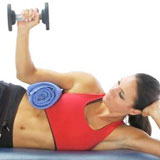
Teaching point:
- The athlete lies on their side with the arm to be worked on top
- The upper arm should be resting on your side and the elbow bent so that the hand points towards the floor
- Rotate the shoulder so that the hand moves up, towards the ceiling as far as possible
- Slowly return to the starting position
- Start with a light weight of around 2kg
- Aim for 10 to 20 repetitions
Note: These shoulder impingement exercises can also be performed in a standing position with a resistance band.
Internal rotation lying
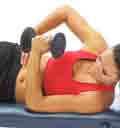
Teaching point:
- Lay on your side with the arm to be worked on the bottom
- Start with the forearm parallel to the floor
- Rotate the shoulder so that the forearm moves towards the stomach and the hand points upwards
- Slowly lower the weight back to the start
- Start with a light weight of around 2-3kg
- Aim for 10-20 repetitions initially
- This exercise should be performed daily
Note: This exercise can also be performed in a standing position with a resistance band.
External rotation in abduction
Once these exercises can be performed easily and progressions have been made with both weight and repetitions then the above exercises can be progressed by performing them in an abducted position.
Teaching point:
- The athlete stands with the arm abducted (raised to the side) to 90 degrees – so the arm is parallel to the floor
- If it is easier the elbow can be rested on a chair or bench (in a seated position)
- The elbow should also be bent to 90 degrees
- Using the elbow as a fixed point, rotate the shoulder so that the hand points to the ceiling
- Slowly return to the starting position
- Start with a 2-3kg dumbbell, or use a cable pulley machine or resistance band
- Aim for 10-20 repetitions initially
It is also important in all shoulder rehabilitation to strengthen the muscles of the shoulder girdle in order to maintain correct shoulder biomechanics. The shoulder girdle consists of the shoulder blade (scapular) and the collarbone (clavicle).
The following exercises are designed to strengthen the shoulder girdle.
Shoulder Retraction
Teaching point:
- The athlete aims to pull the shoulder back, whilst keeping the arm straight and the head still
- The only thing to move when doing this exercise should be the shoulder
- Aim to build up gradually (without a weight at first) from 3 sets of 10 repetitions to 3 sets of 30
- Once 3 sets of 30 are reached with no adverse effects, then the weight can increase
Scapula squeeze exercise
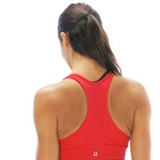
Teaching point:
- The aim is to strengthen the muscles which stabilize the scapula or shoulder blades during the early phase of a shoulder rehabilitation program
- In a sitting position with the elbows by the side, the athlete squeezes the shoulder blades together, holding for 5-10 seconds
- Squeeze the shoulder blades or scapulae together while ensuring the elbows are kept down
- More on Shoulder impingement
